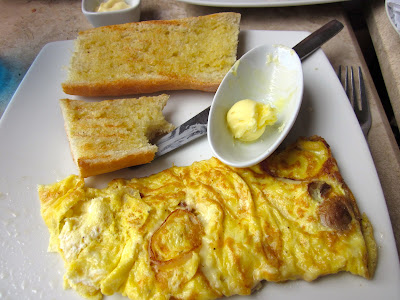'Tis the season for Somos Emprendedores, Somos Perú (we are entrepreneurs, we are Peru), the comprehensive course on writing your own business plan that every volunteer in the Community Economic Development program offers in their sites at the end of their first year. This means that my Tuesday and Thursday afternoons for the next couple months are occupied by teaching my ten or so jóvenes ages 16-24 about every aspect of starting and running your own business.
As my academic studies have never gone remotely near the realm of an MBA, a lot of the concepts I'm teaching I first formally learned during Peace Corps training last summer - from qualities of an entrepreneur, to feasibility studies, market valoration, client profiling, mission and vision, cost analysis, point of equilibrium, budget projections, customer service, operations plans, and environmental impact - in Somos, we cover it all. But, seeing as we're operating in rural Peru with youth who are new to the idea of business, we teach each topic in the most basic and most understandable way possible.
Peace Corps has developed a whole textbook/manual and curriculum for the Somos course (this is where I go to figure out, for example, how in the world you go about calculating the value of a market). However, having the outline of a lesson plan is not the same as being ready to teach a class - I always end up tweaking the official lesson to suit my own style of teaching, and the manual does not come with any pre-prepared materials. Consequently, on any given Monday or Wednesday afternoon, my desk typically looks like this:
The above explosion is what class prep looks like - powerpoint is never invited to the party. I write definitions and draw diagrams on butcher paper, make ridiculously bad drawings to help illustrate points, and create the props needed for the student-centered dinámicas (activities) that are the best part of every class. Without fail, preparing for the class takes equally as long or longer as does teaching the class itself. It makes me wonder how full-time teachers ever have enough time in their days!
I'm currently about a third of the way through the course, and it's been a lot of fun so far - the kids who come to class are really excited about starting their own businesses and it's clear they are getting a lot out of the course. Once we finish the class, the students will present their completed business plans, and I'll pick the best one to bring to Lima for the national SESP competition held at the U.S. Embassy. Each volunteer brings their best students, they all present their ideas to a panel of judges, and five or six will walk away with the seed money they need to actually start their businesses. The free trip to Lima and getting to visit the Embassy function as pretty cool consolation prizes :)


















































